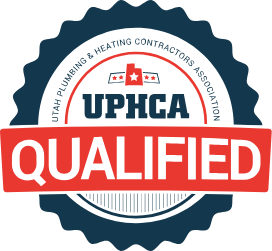We are often asked what the differences in 80% and 96% efficient furnaces are. Obviously, the 96% efficient furnace will be more efficient using natural gas to heat your home. In fact, it is 16% more efficient. Both types of furnaces have single-stage or two-stage heating models. Both have multi-speed blower motor or variable speed blower motor models as well. A variable-speed blower motor will use roughly 1/3 of the electricity of a multi-speed motor.
A 96% efficient furnace condensates water. This water runs through drain lines in the furnace. These drain lines can plug up over time and should be periodically cleaned. For this reason, a high-efficiency furnace will require more maintenance.
High-efficiency furnaces use a PVC flue to vent combustion gases. Two or three-inch pipes will need to be running from your furnace room to the outside for the installation of these furnaces. This does increase the cost of a high-efficiency furnace.
Questar offers a rebate when homeowners install a high-efficiency furnace. Depending on the model of furnace that you choose, the rebate ranges from $350 to $450. Express Home Services will help you fill out the paperwork for this rebate when we install one of these furnaces for you.
In a standard-efficiency 80% furnace, 20% of the heat contained in the natural gas is exhausted up the furnace vent. A condensing furnace with an AFUE of 90% or above incorporates a secondary heat exchanger to recover that lost heat. Combustion gases are diverted into a condensing phase and heat released as the gases condense to water is extracted by the secondary exchanger. This boosts the furnace AFUE percentage and lowers operating costs. The more efficient a furnace, the lower your energy bill for heating.
The price of a furnace generally rises in step with its fuel efficiency. A furnace with a 96 AFUE can cost $1,000 more than a similarly sized unit with an 80 AFUE, but they’re economic in regions where winters are especially harsh—including Utah.
While that additional cost can generally be recouped in lower fuel bills over the lifetime of the furnace, this may not be the most cost-effective approach for all homeowners. If you have any intention of selling your home shortly after purchase, you will lose money on the investment, as there is a payback period of 8 to 12 years. 96% furnaces are also directly affected by how well your home retains heat, and the rates you pay for gas.
You decide. We’ll install.






